Finding the perfect substitute for soba noodles can be a bit of a puzzle.
We’ve all been there, rummaging through the pantry, craving that perfect soba bowl.
And then, reality hits – we’re out of soba noodles.
No need to toss your dinner plans out the window, though.
We’ve got the lowdown on the five best swaps that’ll save your dish.
From familiar favorites to unexpected twists, these alternatives keep your meal on track.
Expect to be surprised by what you can use.
Each one brings its own unique touch to your plate, ensuring you won’t miss the original.
Stick around, because we’re about to make your soba dilemma a thing of the past.
What’s Soba Noodle?

Soba noodles are a type of Japanese noodle made from buckwheat flour.
They are thin and light brown in color, with a slightly nutty flavor.
Soba noodles have been eaten in Japan for centuries and are traditionally served either cold or in a hot broth.
Soba noodles are very versatile and can be used in a variety of dishes.
They are commonly served as a main course, in salads, or as a side dish.
Soba noodles can also be stir-fried or used in soup.
When cooking soba noodles, it is important not to overcook them, as they will become mushy and difficult to eat.
If you are looking for something different to try, why not give soba noodles a try? They are a delicious and healthy option that can be enjoyed in many different ways.
The 5 Best Substitutes for Soba Noodles
While soba noodles are a delicious and popular type of Japanese noodle, they’re not always easy to find outside of Asian markets.
If you can’t find soba noodles or just want to try something different, there are several good substitutes.
1 – Udon Noodles
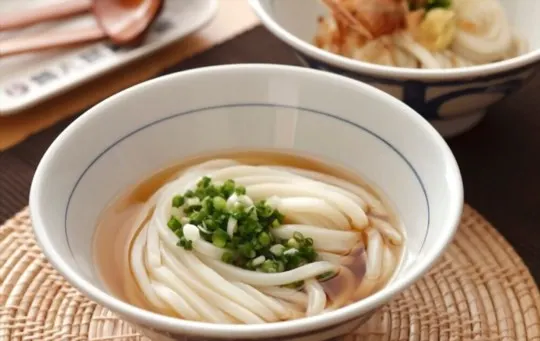
Udon noodles are a type of thick, wheat-based noodle that is popular in Japanese cuisine.
They have a chewy texture and a slightly bland taste, making them the perfect canvas for hearty and flavorful sauces.
While they are traditionally made with only wheat flour, water, and salt, many modern udon noodles also contain eggs.
Not sure how to use udon noodles? No worries – they actually make a great substitute for soba noodles in many recipes.
However, they will absorb more of the flavors from the dish, so it is important to adjust the seasoning accordingly.
So if you’re craving soba but don’t have any on hand, udon noodles are the perfect solution.
2 – Ramen Noodles
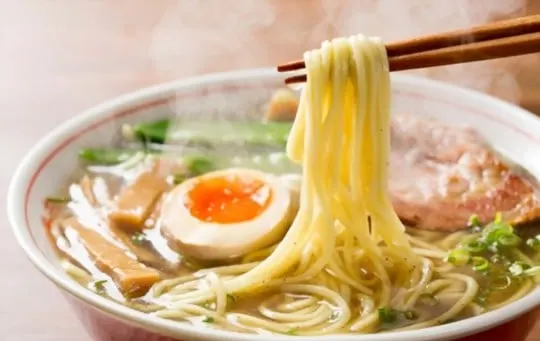
Ramen noodles are a type of wheat noodle that is popular in both Japan and China.
They are typically made from wheat flour, water, salt, and an alkaline water mixture and then formed into noodles.
Ramen noodles have a chewy texture and can be either thick or thin.
They are also typically lubricated with oil to prevent them from sticking together.
In terms of taste, ramen noodles are usually quite neutral, which is why they are often used as a base for other flavors.
However, they can also be enjoyed on their own with a simple seasoning like salt or soy sauce.
Like udon noodles, ramen noodles make a great substitute for soba in many recipes.
They have a similar chewy texture and can be used in both hot and cold dishes.
However, because they are thinner than soba noodles, they will cook more quickly.
So be sure to keep an eye on them while they’re cooking and adjust the cooking time accordingly.
3 – Rice Noodles
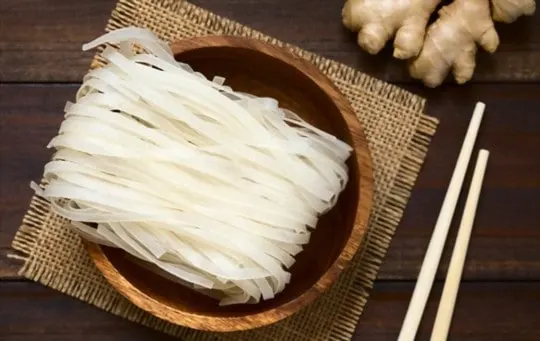
If you’re in the mood for something light and flavorful, rice noodles are a great option.
They have a delicate taste and a slightly chewy texture that makes them perfect for stir-fries, soups, and salads.
Plus, they’re easy to find in most supermarkets.
If you can’t find rice noodles, you can substitute soba noodles.
Just be sure to cook them for a little less time since they’re thinner than rice noodles.
So whether you’re looking for a quick and easy meal or something new to try, give rice noodles a chance.
You might just find that they’re your new favorite noodle.
4 – Cellophane Noodles
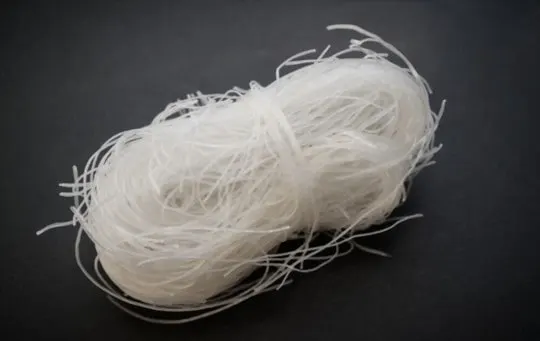
If you’re looking for a light, refreshing noodle, cellophane noodles are a great option.
Also known as glass or clear noodles, they’re made from mung bean starch and have a subtle flavor that pairs well with almost anything.
They’re also super versatile – you can use them in soups, salads, or stir-fries.
And since they’re nearly calorie-free, they make a great healthy alternative to other types of noodles.
Cellophane noodles have a slightly chewy texture and are translucent when cooked.
If you can’t find them at your local grocery store, you can substitute them for soba noodles.
Just be sure to cook them for less time, as they tend to get mushy if overcooked.
5 – Vermicelli Noodles
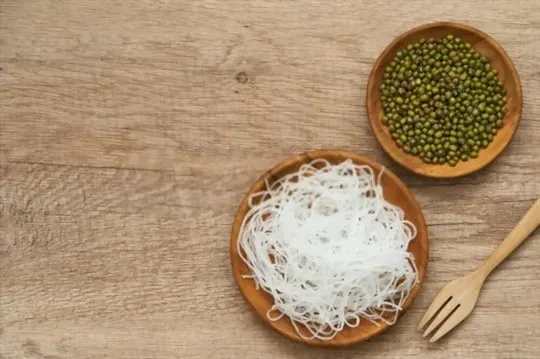
If you’re looking for a light, fresh noodle to add to your next dish, vermicelli noodles are a great option.
Often used in Asian cuisine, these delicate noodles have a subtle flavor and smooth texture that makes them versatile enough to complement a variety of flavors.
Vermicelli noodles are also thinner and narrower than soba noodles, making them a perfect substitute if you’re looking for a lighter option.
To cook vermicelli noodles, simply bring a pot of water to a boil and add the noodles.
Cook for 2-3 minutes or until tender.
Drain the noodles and rinse them with cold water before adding them to your dish.
Whether you’re tossing them with a flavorful sauce or adding them to a soup or stir-fry, vermicelli noodles are sure to add an extra touch of deliciousness to your meal.
Conclusion
In conclusion, the five best substitutes for soba noodles are udon noodles, ramen noodles, rice noodles, cellophane noodles, and vermicelli noodles.
Each of these options has a similar texture and can be used in a variety of dishes.
So if you’re looking for a new noodle to try, one of these options is sure to be a hit.
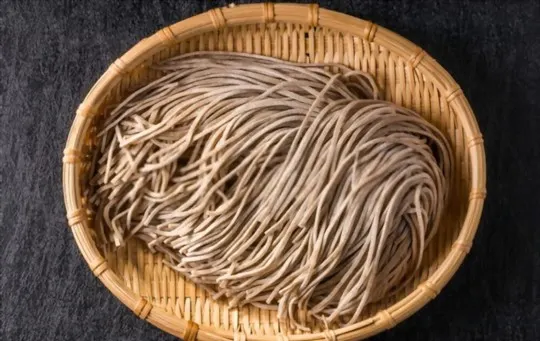
The 5 Best Substitutes for Soba Noodles
Ingredients
- Udon Noodles
- Ramen Noodles
- Rice Noodles
- Cellophane Noodles
- Vermicelli Noodles
Instructions
- Pick your favorite substitute from the list above.
- Follow cooking directions for your selected substitute with the proper ratio of ingredients.

Andrew Gray is a seasoned food writer and blogger with a wealth of experience in the restaurant and catering industries. With a passion for all things delicious, Andrew has honed his culinary expertise through his work as a personal chef and caterer.
His love for food led him to venture into food writing, where he has contributed to various online publications, sharing his knowledge and insights on the culinary world. As the proud owner of AmericasRestaurant.com, Andrew covers a wide range of topics, including recipes, restaurant reviews, product recommendations, and culinary tips.
Through his website, he aims to inspire and educate fellow food enthusiasts, offering a comprehensive resource for all things food-related.

Leave a comment